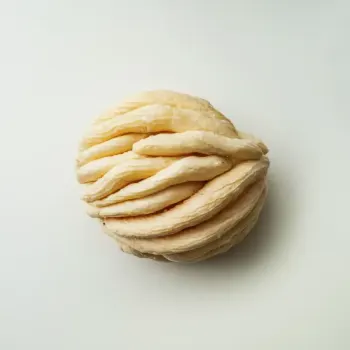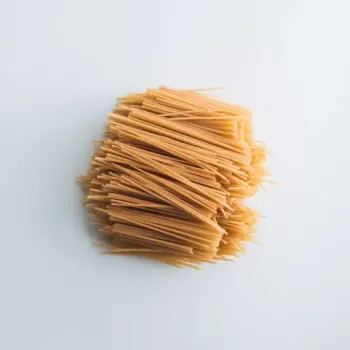Cavatappi and Fusilli are both types of pasta with spiral shapes ideal for holding sauces, used in salads, casseroles, and dishes with hearty sauces, but they differ in texture and sauce interaction, with Cavatappi being hollow and better for thicker sauces and Fusilli being solid, suited for lighter ones.

Cavatappi is a type of macaroni that is tube-shaped with helical grooves on the surface. Its name, meaning 'corkscrew' in Italian, reflects its spiral, screw-like appearance. Its unique shape and ridges are ideal for holding onto sauces and other ingredients, making it a popular choice for pasta salads, casseroles, and dishes with textured sauces.

Fusilli is a variety of pasta that is typically twisted into a corkscrew shape. The spirals and grooves in Fusilli are perfect for capturing both light and hearty sauces. It's versatile in the kitchen and can be used in a range of dishes, including salads, soups, and baked pasta dishes.
While both pastas have a spiral shape, Cavatappi is a hollow tube with ridges and Fusilli is solid with a tighter spiral. Cavatappi’s tube shape makes it slightly better for thicker sauces as it allows the sauce to flow inside and cling to the grooves. Fusilli's solid, tighter spirals are excellent for lighter sauces and work well in cold pasta salads. The textural differences can also affect the cooking time, with Cavatappi generally taking a bit longer to cook through than Fusilli.

Your ultimate Recipe Box, Meal Planner, and Cooking Class all in one
Cavatappi is ideal for pasta salads with chunky ingredients and thicker dressings. Its hollow center captures pieces of vegetables and meat, ensuring a flavorful bite each time. Use Cavatappi for a Mediterranean pasta salad with olives, feta, and a creamy dressing. Fusilli is preferable for lighter pasta salads with vinaigrette-based dressings. Its smaller grooves hold onto the dressing well, distributing the flavor evenly throughout the dish. Try Fusilli in an Italian pasta salad with cherry tomatoes, basil, and a balsamic glaze.
In casseroles, Cavatappi's larger size and ridges provide a satisfying texture that stands up to baking. It works well in hearty recipes like cheeseburger casserole or a classic baked macaroni and cheese. Fusilli adds a delightful twist to casseroles and is ideal when you want the pasta to integrate well with other ingredients. It's great for chicken Alfredo bake or a vegetable fusilli casserole with a light cream sauce.
Cavatappi's ridges make it excellent for clinging to thick, meaty sauces. Use it in a Bolognese or a hearty ragù to enjoy a robust and satisfying meal. Fusilli's shape is perfect for capturing bits of meat and vegetables in chunky sauces. It's an excellent choice for a sausage and pepper sauce or a zesty puttanesca.
Both Cavatappi and Fusilli are typically made from the same basic ingredients, so their nutritional profiles are quite similar.
| Nutrient | Fusilli ( per 100g ) | Cavatappi ( per 100g ) |
|---|---|---|
| Fat | 1.5g | 1.5g |
| Fiber | 3g | 3g |
| Sodium | 6mg | 6mg |
| Protein | 13g | 13g |
| Calories | 359 | 359 |
| Carbohydrates | 71g | 71g |
Yes, Cavatappi can be used in place of Fusilli in pasta salads, particularly those with thicker dressings and larger mix-ins.
Yes, there can be a slight difference in cooking time due to the hollow shape of Cavatappi; it may take a little longer to cook through than Fusilli.
Cavatappi is generally better for creamy sauces because its ridges and hollow shape allow the sauce to adhere well to the pasta.
They can be interchangeable in baked dishes, but the texture and sauce interaction will vary depending on which pasta you use.
Typically, Cavatappi and Fusilli have similar nutritional values when made from the same ingredients, although the shape may influence portion sizes and perceived fullness.